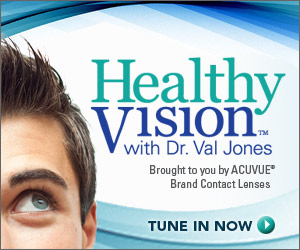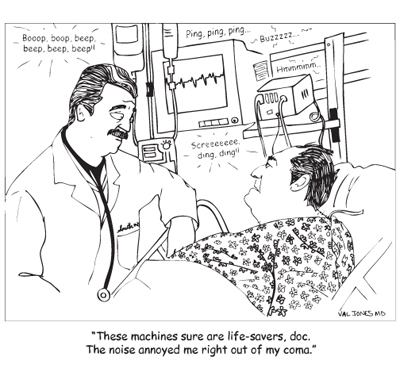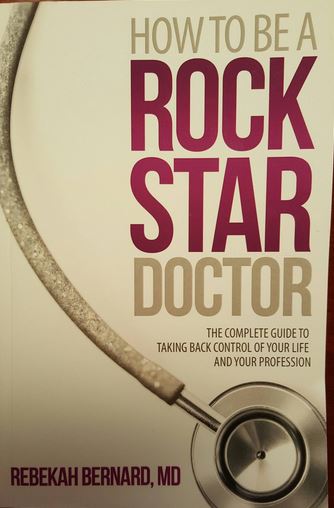January 27th, 2008 by Dr. Val Jones in Humor, True Stories
5 Comments »
I spent the weekend with 6 nieces and nephews, ranging in
age from 6 weeks to 13 years. One four-year-old niece was particularly
interested in engaging me. I tried to warn her that I was terribly boring and
that I wasn’t good at playing with dolls. But she remained unfazed by my
late-night protestations.
“Auntie Val would you like some ice?” She said, presenting
one melting ice cube to me in her warm hand.
“Hmm… no, not really, thanks.” I mustered a smile hoping
that she wouldn’t feel rejected.
The little girl went on, “Well, my bed is full of soft
blankets so you should put on your jammies and we can go to sleep there. It
will be a lot of fun.”
“Ah… well, that’s very kind of you to offer, but I think I
need my teddy bear to fall asleep. Uncle Steve is my teddy bear.” I pointed at
my husband sitting next to me on the couch.
The little girl replied matter-of-factly, “No he’s not. He’s
your cake.”
“Um… well, that’s an interesting way to look at it.” I
replied awkwardly.
“You know, if you kiss uncle Steve then you’ll be married.”
She went on.
Steve immediately kissed me on the cheek and smiled
triumphantly.
“No, you have to kiss her on the lips, uncle Steve.” The
little girl put her hands on her hips.
“Uh… well… Honey, would you like to marry me again?” I asked
sheepishly.
“Why yes I would…” and Steve gave me a peck on the lips.
Then the girl squealed with glee and ran around the coffee
table one and a half times.
Does this buy me a second honeymoon?This post originally appeared on Dr. Val’s blog at RevolutionHealth.com.
January 26th, 2008 by Dr. Val Jones in Health Policy, Opinion
3 Comments »
I had a really great conversation with iHealthBeat reporter Kate Ackerman recently. She summarized our conversation
in an online article and I’ve copied some of it here. Please check out the full article for the entire interview.
Consumer Demand Fueling Online Health Care Market
by Kate Ackerman, iHealthBeat Associate Editor
As patients increasingly turn to the Internet for health care information and online tools to manage their health, many companies, both new and old, are stepping up to meet the consumer demand.
It is still too early to tell which companies will be successful and how the Internet-savvy health care consumer will transform the patient-physician relationship, but the trend has captured the interest of many health care insiders.
Val Jones, senior medical director of Revolution Health and author of a blog called “Dr. Val and the Voice of Reason,” spoke to iHealthBeat about the online health care market, physician concerns about patients relying on the Internet and the role of medical blogs.
…
A recent Harris Interactive survey found that the percentage of U.S. adults who looked for health care information online increased from 72% in 2005 to 84% in 2007. Why do you think more and more consumers are turning to the Internet for health information?
I think it’s partially because more and more consumers are turning to the Internet for information, period. Online information is incredibly convenient, served up lightning fast and has revolutionized how we research everything from buying toasters to finding a doctor. Of course, health is much more serious and complicated than purchasing products, so consumers should be very wary of the source of their health information.
Do you see a generational divide in the people using Revolution Health?
We primarily appeal to everyone between the ages of 20 and 60, though women conduct more health searches than men. The only age gaps are related to the medical subjects being researched. Clearly, not too many 20-somethings are reading about menopause, and not too many 50-year-olds are reading about college stress. Otherwise, all of our community tools and groups are fair game for people of any age. We have 60-year-olds blogging and enjoying discussion groups, and 20-year-olds posting forum questions too. It’s wonderful to see the generations interacting online and learning from one another.
New York orthopedist Scott Haig in November wrote an essay in Time Magazine complaining about patients who research their symptoms, illnesses and doctors online before seeking treatment. What are the downsides to patients searching for health care information online?
I think Dr. Haig’s essay has been somewhat misinterpreted because he was focusing on a specific patient with a serious disorder. My favorite quote from Dr. Haig’s article is that “the role of the expert is to know what to ignore.” I think the major downside for patients searching for health information online is that it can be difficult to figure out what’s contextually relevant to them. Aside from that, the next major downside is that there are snake-oil salesmen out there preying on the frustrations that we all have about our broken health care system and promising “miracle cures” and fueling mistrust in doctors.
What can be done to ease concerns from physicians, like Haig, about consumers relying on the Internet for health information?
Educated patients are a pleasure to work with, but misinformed patients require lots of extra help. The hours we spend every week dispelling urban legends and Internet-fueled medical myths is really mind-boggling. Physicians are naturally protective of their patients and don’t want them to be duped or misled.
From Google to Microsoft, companies are beginning to recognize an opportunity in the online health care market. Is there enough room for all of these companies? What will make successful ventures stand out from the rest of the pack?
There’s as much room as consumer demand will fuel. However, only the largest and most innovative companies will ultimately survive long term. While we’re all waiting for the government to create standards for health information and the creation of interoperability rules, successful companies will meet the needs of today’s consumer. Small but practical tools and innovations will keep the companies solvent while we work toward the holy grail of a common health information platform for all the stakeholders.
Medical blogs seem to have taken off in recent years. Who do you think the intended audience is?
Actually, while there are an estimated 70 million blogs out there, only a few hundred doctors are blogging. That’s a huge discrepancy, and I don’t think we’re even at the beginning of the wave of medical blogging that will inevitably occur as doctors enter the Web 2.0 world. The first pioneers of the medical blogosphere are writing mostly for their peers, though patients find their blogs very engaging and read them as well. Very few medical bloggers write specifically for consumers.
What are your predictions for the online health care market in 2008 and beyond?
With decreasing access and increasing patient loads, I think we’re going to see the consumer-driven health care movement take center stage. Patients are going to need to “do it themselves” a lot of the time (meaning manage their own health information, teach themselves about disease management and make financial plans to take care of their own needs if the government cannot afford to do so).
Another trend I have my eye on is the retainer medicine movement. As primary care physicians continue to be squeezed out of existence by decreasing Medicare reimbursements, they are beginning to join an “off-the-grid” group of providers who simply do not accept insurance.
As more PCPs create retainer practices, I think IT solutions will really take off. Online tools that simplify their practices and speed up their patient communication will be welcomed and encouraged.This post originally appeared on Dr. Val’s blog at RevolutionHealth.com.
January 25th, 2008 by Dr. Val Jones in News
1 Comment »
I spent a year working in a vaccine research laboratory at the Mayo Clinic. My project involved analyzing the DNA of military personnel who had died of the measles in the early 20th century. Strangely enough, the military saved small pieces of their flesh embedded in paraffin wax (and frozen) for future study. I guess that “future study” was my research project.
I must admit that I felt a little bit creepy as I cut tiny slivers of tissue out of the waxy fossils. I wondered about the lives of the tissue’s original owners. Who were these soldiers? Did their families still think of them? Did they leave wives and children behind?
Well, as it turned out, most of the tissue samples had a little piece of DNA in common and it was pretty exciting to discover what may have been a genetic susceptibility to this particular virus. Figuring out why some people survive the measles while others are overcome and die from it can be the turning point in understanding how to protect future generations from its ravages.
Today I read about some new research linking susceptibility to the influenza virus to certain family lineages. This makes perfect sense, since our body’s ability to defend itself against disease is largely based on our genetic code. However, we’re only just beginning to unwrap the subtle role of each piece of DNA code in our immune function. The complex interactions of microscopic proteins and chemicals in our bodies is much more difficult to interpret and predict than we can even fathom. Nonetheless, it’s really exciting that we’re inching closer to being able to protect ourselves from scary viruses. We’ve won a few battles, but haven’t yet won the war.
And on another front, some researchers are working on modifying the ebola virus so as to render it harmless to humans. I’m not sure I’d want to sign up for THAT research project, frankly. I have a lot of respect for those who work in labs with such risky pathogens – but let’s just say I wouldn’t want to invite those folks out for a beer.
Let’s keep an eye on scientific discoveries in the field of virology. With the bird flu and other threats looming on the horizon, our lives may one day depend on it!This post originally appeared on Dr. Val’s blog at RevolutionHealth.com.
January 24th, 2008 by Dr. Val Jones in Health Tips
2 Comments »
I loved yogurt when yogurt wasn’t cool.
In fact, I grew up on a small dairy farm in Canada where our sole product was yogurt. My parents bought a cow (Daisy) “in an unguarded moment” and ended up having to get creative to get rid of all the extra milk that she produced for our family. One thing led to another – and I wound up as the VP of Sales and Marketing for a growing yogurt company taking Canada by storm. So when I saw today’s news release about Dannon being sued for exaggerated health claims for their yogurt, my dairy ears perked up.
First of all, if it’s true that Dannon is claiming that their yogurt has greater health benefits than other yogurts with active cultures, that’s false advertising.
I also think it’s pretty sneaky that they (allegedly) ran ad campaigns exaggerating the health benefits of yogurt, and then marked up their product by 30% to make consumers feel that they were getting added value from what was there all along. Typical big business move, right?
Secondly, yogurt bacteria do have beneficial uses (eating yogurt may decrease colon infection rates in hospitals, and can reduce the chance of vaginal yeast infections after antibiotic use). There is no conclusive evidence that yogurt treats or prevents diarrhea. However, it’s silly to extrapolate that these friendly bacteria will improve the health of your entire immune system – so you’ll never be sick – or that they will perfectly regulate your bowels – regardless of your underlying disease. As with many foods that have been shown to have some specific health benefits (green tea, blueberries, flax seeds) the media tends to blow them out of proportion.
And finally, what should you know about yogurt? Know that for those who are not allergic to milk products, it is a healthy nutritional option (especially the low fat variety without too much sugar) that may be especially important if you’re in the hospital or have received any antibiotics recently. Yogurt contains protein and calcium, which are important components of a healthy diet. But beyond this nutritional benefit (and the infection reduction in at-risk populations), I wouldn’t ascribe any particular magic powers to this tasty treat – as much as I’d like to.
1. Look for the “active cultures” sign on yogurt containers. The National Yogurt Association (NYA) established its own criteria for live and active culture yogurt in conjunction with its Live & Active Culture seal program. In order for manufacturers to carry the seal, refrigerated yogurt products must contain at least 100 million cultures per gram at the time of manufacture. Don’t pay extra for a yogurt because they have live cultures. The majority of them do!
2. Yogurt bacteria don’t live forever in your gut, so you’ll need to eat yogurt (or take active cultures) regularly to repopulate the colonies. I can’t find any data to support an exact consumption frequency. I guess it also depends on how many bacteria are contained in the yogurt or supplement you’re taking.
3. Acidophilus pills (one of the most popular yogurt bacterial strains) are available at health food stores for those who’d rather not eat yogurt but still want the benefits of the culture. These pills must be refrigerated to keep the culture alive (kind of like keeping milk cool) – and make sure you check the expiration date too. For more information on acidophilus, check out this supplement database.
4. The most common side effect of eating live yogurt cultures (in pill form or in yogurt form) is bloating and gas.
So don’t be surprised if you encounter it!
And I think that’s a nice thought to end on.This post originally appeared on Dr. Val’s blog at RevolutionHealth.com.
January 23rd, 2008 by Dr. Val Jones in News
No Comments »
I was shocked and saddened to hear of the sudden and unexpected death of actor Heath Ledger. As fate would have it, I had watched his movie, “Candy” on the weekend prior to his death. Candy is the sad story of a young Australian couple who get involved in the drug culture, begin shooting heroin, and end up as junkies, prostituting themselves to afford their habits.
While the cause of Heath’s death is not yet known, a drug overdose is suspected and autopsy results will not be available for up to two weeks. A coworker asked me why the results would take so long, and what’s involved in an autopsy. I found a good article on the subject and will excerpt it here:
- Before the actual autopsy, as much information as possible is gathered about the person who died and the events that led to the death. Other information may be gathered by investigating the area where the person died, and studying the circumstances surrounding the death.
- Procedures done during the autopsy may vary depending on the circumstances surrounding the death, whether the medical examiner or coroner is involved, and what specific issues are being evaluated during the autopsy.
- The autopsy begins with a careful examination of the external part of the body. Photographs may be taken of the entire body and of specific body parts. X-rays may be taken to evaluate skeletal or other abnormalities, confirm injuries, locate bullets or other objects, or to help establish identity. The body is weighed and measured. Clothing and valuables are identified and recorded. The location and description of identifying marks, such as scars, tattoos, birthmarks, and other significant findings (injuries, wounds, bruises, cuts), are recorded on a body diagram.
- A complete internal examination includes removal of and dissection of the chest, abdominal, and pelvic organs and the brain. The examination of the trunk requires an incision from the chest to the abdomen. The removal of the brain requires an incision over the top of the head. The body organs are examined before removal, then removed and examined in detail.
- In some cases, organs may be placed in a preservative called formalin for days to weeks prior to dissection. This is particularly important in the examination of the brain for certain types of diseases or injuries. Tissue samples are taken from some or all of the organs for examination under a microscope.
- Completion of the autopsy may require examination of tissues under a microscope, further investigation of the circumstances of death, or specialized tests (such as genetic or toxicology tests). The tests performed may vary based on the findings at the autopsy dissection, the circumstances of death, the questions asked about the death, and the condition of the tissues and body fluids obtained at autopsy. A written report describes the autopsy findings. This report may address the cause of death and may help answer any questions from the deceased person’s doctor and family.
So it makes sense that autopsy results take as long as they do. A thorough investigation requires everything from documenting items from the scene of the death, to a careful analysis of blood toxins, to preserving tissues in formalin before viewing them under a microscope. All of the clues must be carefully weighed (Is there any evidence of a heart attack? Was there a blot clot in the lungs? Was there a brain hemorrhage?) to get the full picture and to be sure of the exact cause of death. All things considered, it’s amazing that the pathologists can render an opinion so quickly.
My heart goes out to Heath’s family as they await closure on the cause of his death.
****
See also:
Mira Kirshenbaum discusses depression, suicide, and a healthy way to handle stressful life circumstances
.This post originally appeared on Dr. Val’s blog at RevolutionHealth.com.










